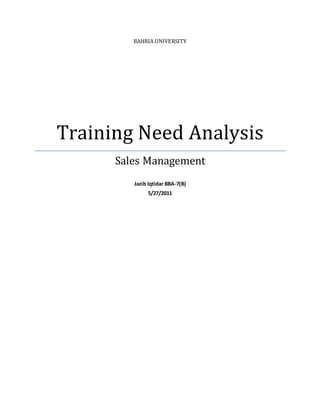This document discusses the process of conducting a training needs assessment. It begins by explaining that a needs assessment is the first step in designing an effective training program and involves analyzing the organization, jobs, skills, and individual employees. The document then describes the three levels of needs assessment: organizational analysis, task analysis, and individual analysis. It provides examples of sources to use at each level, such as reviewing goals and strategies, job descriptions, performance reviews, and interviews. Finally, the document states that prioritizing needs allows the training manager to set objectives and design the appropriate training program to address performance gaps.







